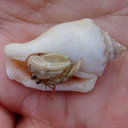Morphological Characteristics, Nutrients, and Bioactive Compounds of Zizania latifolia, and Health Benefits of Its Seeds.
Keywords
Abstract
Zizania latifolia (tribe Oryzeae Dum., subfamily Oryzoideae Care, family Gramineae) is native to East Asian countries. The seeds of Z. latifolia (Chinese wild rice) have been consumed as a cereal in China for >3000 years. Z. latifolia forms swollen culms when infected with Ustilago esculenta, which is the second most-cultivated aquatic vegetable in China. The current review summarizes the nutrients and bioactive compounds of Z. latifolia, and health benefits of its seeds. The seeds of Z. latifolia contain proteins, minerals, vitamins, and bioactive compounds, the activities of which—for example, antioxidant activity—have been characterized. Various health benefits are associated with their consumption, such as alleviation of insulin resistance and lipotoxicity, and protection against cardiovascular disease. Chinese wild rice may be used to prevent and treat metabolic disease, such as diabetes, obesity, and cardiovascular diseases. Various compounds were isolated from the swollen culm, and aerial parts of Z. latifolia. The former suppresses osteoclast formation, inhibits growth of rat glioma cells, and may act as antioxidants and immunomodulators in drugs or foods. The latter exerts anti-fatigue, anti-inflammatory, and anti-allergic effects. Thus, Z. latifolia may be used to produce nutraceuticals and functional foods.


